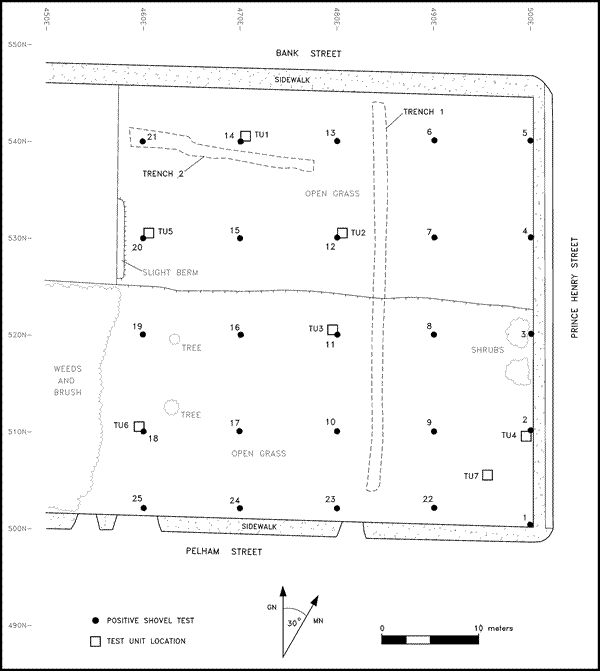Site Grid
One of the keys to successful archaeology is knowing exactly where everything was found on a site. To make this process efficient, archaeologists lay out a grid for mapping the entire site and smaller areas within the site. At the Prince Henry Street site, points on the grid were marked with nails driven into the ground at 10-meter intervals. A label attached to each nail has the coordinate for that point on the grid (distances east of (x axis) and north of (y axis) a point of origin (0,0). When drawing maps of different areas of the site, archaeologists can use the nearest grid nail as a reference point.
It is also important to consistently record the depths of soil layers, artifacts, and features. That information is important for understanding relationships between different parts of the site. Each site has one or more "datum" markers used as a reference for all other depths. Archaeologists use surveying equipment to measure depths relative to the datum.















